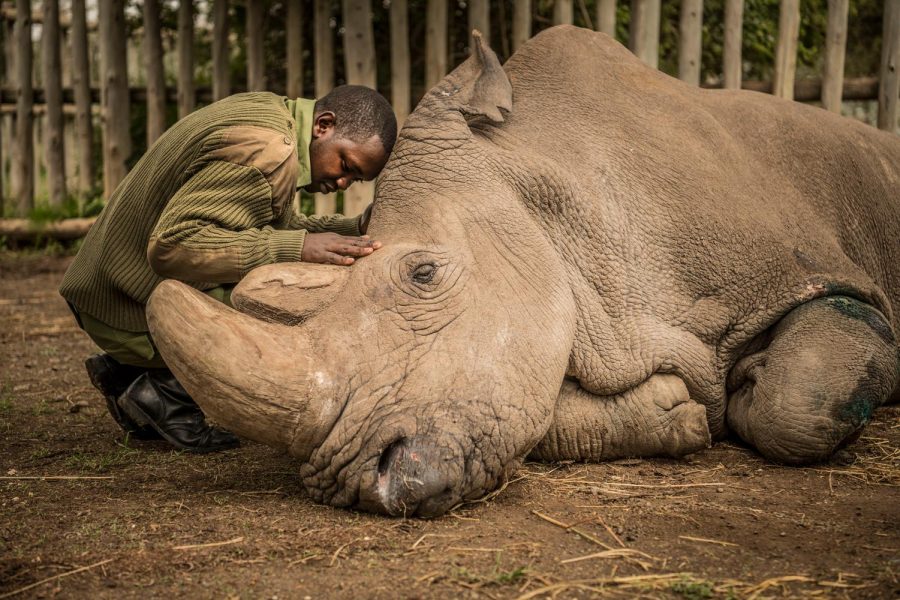Lab-Made Embryos Could Save Northern White Rhinos
September 17, 2019
Despite the death of the last male, the remaining two female northern white rhinos still have hopes of having genetic offspring. An international team of researchers at the Leibniz Institute for Zoo and Wildlife and the Free University of Berlin has been working to save the white rhinos for years using in vitro fertilization. Now that researchers have fully fertilized two of these eggs, the next step is to implant the embryos into a close relative, the southern white rhino.
Northern white rhinos likely went extinct in the wild around 2007 or 2008. Though a few of them survived in zoos, many of the living individuals were aging or had health issues that prevented them from carrying offspring. In 2018, the last male white rhino, Sudan, died, leaving only two females alive.
These new embryos qualify the two living females as potential caretakers, not birth mothers. The maternal rhinos, Najin and Fatu, were both born in the Dvůr Králové Zoo in the Czech Republic and now live at Ol Pejeta Conservancy in Kenya. Neither will be able to carry their embryos to term, due to the fact that Najin is too old and Fatu has uterine problems that make her unable to be pregnant.
In late August, scientists successfully harvested eggs from both females, then used a procedure known as “intra cytoplasm sperm injection” with frozen sperm to fertilize the eggs from the two male northern white rhinos, named Suni and Saut. Suni died in late 2014, while Saut died in 2006. Of the ten eggs that were harvested, seven were suitable for fertilization, according to Cesare Galli, a researcher in Avantea Laboratory in Cremona, Italy. Both of those were created with Fatu’s eggs and Suni’s sperm, now frozen to preserve them for future transfer. “The entire team has been developing and planning these procedures for years,” stated Thomas Hildebrandt, a biologist from Leibniz Institute for Zoo and Wildlife Research in Germany.
However, to bring the embryos out of the frozen state, researchers have to complete the task of embryo transfer into other rhinos. They also have to find two healthy southern white rhinos to carry the pregnancies. Although it seems impossible, the “fantastic achievement of the whole team allows us to be optimistic regarding our next steps,” said Jan Stejskal, the director of communications and international projects.
To truly bring back northern white rhinos, more than a couple of successful rounds of in vitro fertilization are necessary. Scientists only have two living reservoirs for the eggs and have stored sperm from only four northern white bulls. This leaves little to no room for error or genetic diversity in resurrecting the species. Although the tissue from the eggs can expand the gene pool to include a total of 12 rhinos’ genes, researchers are still working on stem cell technology to transform these regular tissue samples into sperm and eggs. When this is successful, it can be used to bring back or preserve a number of other animal species that are considered endangered. The possibilities are endless.
Photo courtesy of TIME.COM

